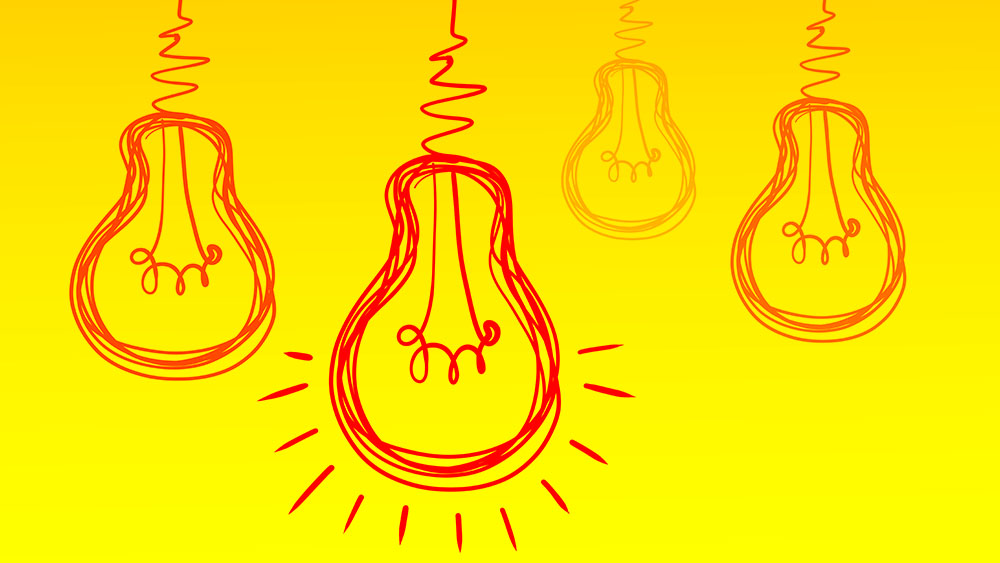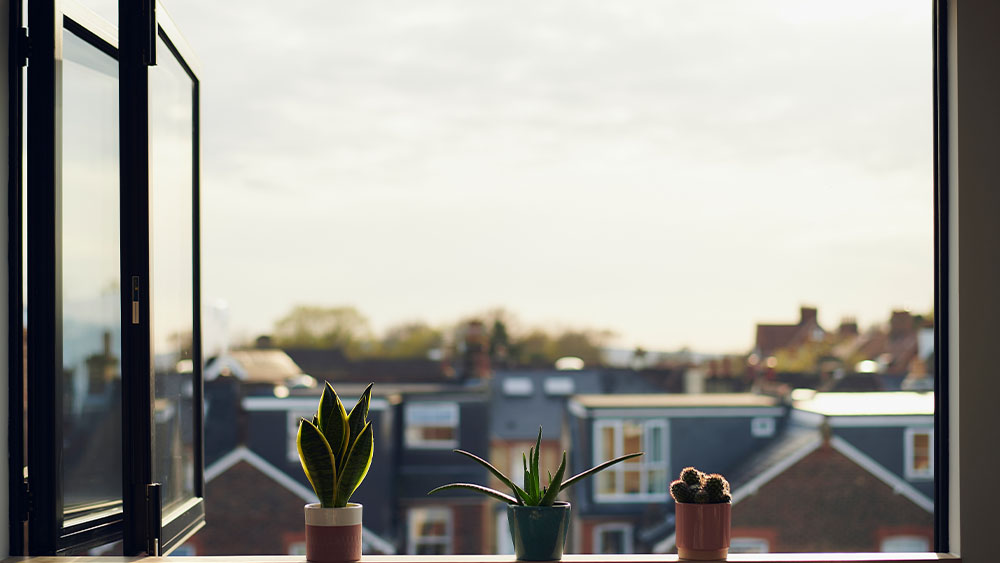
Creativity is a muscle that needs to be worked, but it can be hard to find time for creative exercises, particularly if their not part of your profession. So many people say they would love to be more creative and to develop art or design skills if only there weren't so many other things to do.
Having to the time to study from the best art books and to take online art classes is ideal. But there are things you can do to train your eye and build that creative muscle in micro doses, and they can be surprisingly satisfying.
Below, I suggest 11 creative exercises you can in five minutes or less, from doodle prompts to photo challenges and even the aesthetic arrangement of everyday objects – stick with me, this can be more effective than you might think! Best of all, most of these require little or no investment in equipment, but if you do need new tools, see our picks of the best pencils for artists and the best art supplies for painting.
11 creative exercises you can do in 5 minutes or less
Whether you hope to ultimately work in a creative profession or just want to explore art as a way to relax and take a break from your work, creativity needs to be trained. Like physical exercise, this tends to get put off, be it because of time constraints, fear, or creative block. Try these quick creative exercises to make it grow.
01. Set your own doodle prompts

Sitting down and putting pen to paper, or stylus to one of the best drawing tablets, can demand time and will power, but almost everyone has at least a couple of minutes to take a moment out during the day. You might even find yourself doodling naturally to kill the time while waiting on a phone call. The trick is to harness and guide those doodles to make them more purposeful.
One way to connect more with the moment is to set yourself doodle prompts. Doodles are often abstract, so this could be something as simple as 'triangles', 'Grains of rice' or 'progressively smaller circles'. These provide focus while pushing you to explore shape and texture.
02. Doodle 2.0
Ready to take your doodles further? As Mr Doodle has shown there's no limit to where you can take this art form. When you're ready to try more ideas, you could experiment with the 'squiggle then draw' technique First, doodle a random line, then give yourself four minutes to turn it into an object. This trains problem-solving skills, forcing you think to creatively.
A challenging variation of this is to draw a whole bunch of squiggles on a page, and then give yourself five minutes to turn them into a particular subject. Squiggle birds, for example (see the video above). For this, you have to think about the recognisable elements of what defines a bird and how to transform each line to get there.
For more challenge, try doodle variations. Start with a figurative doodle: and then try to draw 30 variations of it, each one at least a little bit different from the others. It could be a stick man, a vase of flowers, a pair of sunglasses, dogs. It's a simple way to start exploring what creative details can make an individual different, which may include things like shape, pattern and gesture.
03. Sketchbook warm-up exercises
Want to go from doodling to sketching, but don't know what to draw? Maybe you don't need to draw anything! A classic technique to prepare for sketching is to warm up by trying out materials.
This can be as simple as making pencil marks with different levels of pressure, drawing lines and circles. Grab a soft pencil so you can experiment with dark and light marks. and fill a page, focusing on the physical movement of drawing.
04. Blind drawing
This can be challenging, but also very liberating!. Pick an object – it can be a physical object in front of you or an image on a screen, and try to draw its shape without taking your eyes of it. No, not even for a second to see how your doing!
At least initially, only try to draw the outline of your subject, not the detail, and keep your pen or pencil on the paper, which will help you avoid losing where you are on the page.
The idea is that by looking 100% of the time at your subject and 0% of the time at your pencil on the page, you can improve your powers of observation and also remove your fear of making mistakes. This can loosen you up creatively, allowing it to work in a situation it isn’t comfortable with.
05. 30 circles
Grab a piece of paper and draw 30 circles, set a timer, and aim to turn the circles into different objects: as many as you can in five minutes. They don't have to be great ideas, we're focusing on quantity over quality. Just turn those circles into objects: a clock, for example – that's an easy one. Now it's over to you.
A variation on this is to draw random objects inside the circles: the first things that come to your mind. This is a bit like free writing, which we'll get to shortly, but with drawing. Each image should be different. The purpose here is to get the brain working quickly, coming up with ideas without worrying about whether they're logical.
06. Impossible objects
This is another fun way to force yourself to think creatively, and it doesn't necessarily have to involve drawing. Write two sets of prompts – in the example above, the artist uses birds and other kinds of animals. Then pick one prompt from each set at random and draw or describe the hybrid beast, concept or product that results.
Your prompts could be types of buildings, landscapes, objects. Michael Michalko’s book Thinkertoys mentions a variation on this idea as an exercise to train divergent thinking. It tests the imagination by challenging you to envision unseen new concepts.
If you don't want to draw, you could describe the results. This can be interesting if you like product design. What product would emerge by combining the two wildly concepts? What purpose would it serve and who would use it? Try to describe it in detail.
07. Arrange objects at home
This is a great 5-minute creative exercise because it's something you might need to do anyway. It could be as simple as arranging flowers, the objects on your desk, the cutlery in the kitchen cupboards or fruit in a fruit bowl in a more aesthetically pleasing way. It trains your eye and composition skills, and surrounding yourself with aesthetically pleasing things can make you feel more inspired.
08. Five-minute photo challenge
I'm a photographer myself, and like many who live in the centre of a large city, I don't exactly have a lot of opportunity to capture sweeping landscape scenes. That means having to find beauty in mundane everyday things.
After years worrying about gear and chasing the perfect light, I've realised that composition is the most important thing, and that's something you can practice with any camera or camera phone and just a single object on a desk.
Taking a photo can take less than a second. But the idea of the five-minute challenge is that you force yourself to keep taking more photos, looking for new and unusual angles until the five minutes are up. You might think you're done within a minute, but keep going. There's always another perspective.
Another way to approach this challenge is to only take a single photo when the five minutes are up. Spend five minutes looking, moving objects – perhaps most importantly moving yourself – before taking a single shot once you've forced yourself to explore all options.
09. Freewriting
Free writing is like doodling with words. You write what comes into your head without thinking about it, in a stream of consciousness. See where the words lead you and where the pages go.
The idea is to simply enjoying being creative without worrying about the objective, which can lead to procrastination and make you put off writing altogether. You can try using a prompt to give a general thematic guidance, or write completely freely. The important thing is that you're writing – an act of creativity that you think you never have the time for.
10. Mindful eating
What does eating have to do with creativity? Hear me out on this one.
Life and work run at such a pace today that we tend to rush through things without paying them due attention. This probably isn't what you want to hear if you're reading this while scoffing down a takeaway sandwich on your lunch break, but taking the time to notice the colours, temperature, aromas, flavours and textures of your food while you eat is a great way to declutter the mind, improve concentration and recover your sensitivity to stimuli that may inspire your creativity in new ways.
The traditional objective of this classic meditation exercise is increasing presence, but it also develops an important skill for art: noticing detail, which takes me to our last quick creative exercise.
11. Look out the window

I've left the easiest to last. Even if, like me, your view is mainly taken up by blocks of apartments and some overgrown bushes, looking outside is a great exercise for noticing details, and you don't have to move a finger.
Sometimes the duller the view the better. Notice how the light changes with the time of day – or time of year. Where is the sun at 10am in June, and where is it at 10am in December? Where do the shadows fall? How do the colours of shadows and highlights change?
If you have a garden or terrace, you could get up and take a five-minute walk. As Wolff Olins' global executive creative director Emma Barratt told us in a recent interview, "Creativity doesn’t come from sitting at a desk".
Do you have any favourite quick creative exercises of your own? Let us know in the comments if you'd like to share them.
For more ideas, see our pick of 5 experiences that should be on every designer's bucketlist and our piece on unexpected sources of inspiration for designers.







